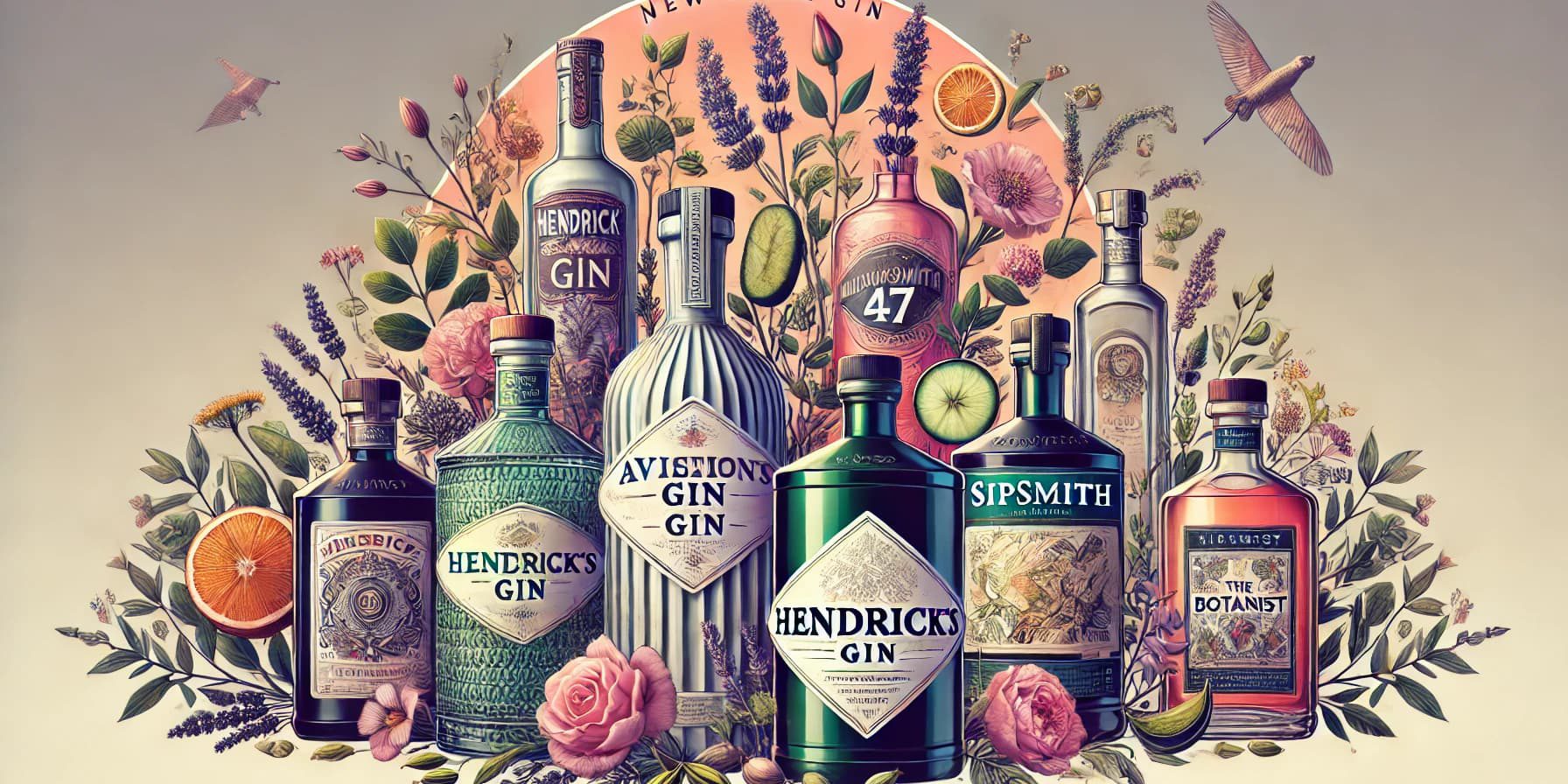Gin has long been a beloved spirit, known for its juniper-forward flavour and versatility in cocktails. However, the landscape of gin production has seen a significant transformation with the emergence of different styles of gin. This article delves into the unique aspects of this modern take on a classic spirit, covering its production process, market trends, popularity, and different styles within this new category.
First, let’s have a look at some of those different styles of gin…
London Dry Gin:
- Characteristics: This style is known for its dry, juniper-forward flavour. No artificial flavours or colours are added, and the botanicals must be distilled with the spirit.
- Example: Beefeater Gin
Old Tom Gin:
- Characteristics: A sweeter style of gin that was popular in the 18th and 19th centuries. It is often considered a bridge between London Dry Gin and Genever.
- Example: Hayman’s Old Tom Gin
Genever:
- Characteristics: The precursor to modern gin, Genever has a maltier flavour due to the use of a malt wine base. It is typically aged in oak barrels and has a richer, more robust taste.
- Example: Bols Genever
Navy Strength Gin:
- Characteristics: A high-proof gin (around 57% ABV) originally made for the British Navy. It has a strong, bold flavour that stands up well in cocktails.
- Example: Plymouth Navy Strength
New Western Dry Gin (Western Style Gin):
- Characteristics: A modern style where the emphasis is on a variety of botanicals rather than being dominated by juniper. This style often features floral, citrus, herbal, or spiced notes.
- Example: Aviation Gin
(What are the Different Style of Gin?)
We will look further into what Western Style Gin is, how it is made and some of the examples of this gin on the market today.
So, what is Western Style Gin?
Western Style Gin, also known as New Western Dry Gin or Contemporary Gin, is a modern take on the traditional gin formula. Unlike classic London Dry Gins, which are heavily dominated by juniper, Western Style Gins place a greater emphasis on a variety of botanicals, creating a more balanced and often experimental flavour profile. This style allows distillers to highlight other botanicals, such as floral, citrus, herbal, or spicy notes, making the juniper influence more subtle.
History of New Style Gin – When Was New Style Gin Invented, Who Invented New Style Gin, How Was It Invented?
New Style Gin is a relatively recent innovation in the long history of gin. It emerged in Europe in the early 21st century as distillers began to explore new ways to differentiate their products in a crowded market. The focus shifted from the traditional juniper-heavy profile to a more diverse botanical blend, allowing for greater creativity and experimentation.
(What is New Western dry gin?)
How is New Style Gin Produced?
New Style Gin or Contemporary Gin is produced by emphasising a broader range of botanicals beyond juniper. Distillers experiment with flavours to create a more balanced and often more complex spirit. A recipe ranges from 5 to 50 ingredients, with an unlimited number of possible variations. This innovative approach allows for a creative expression that appeals to modern palates seeking new and exciting flavour profiles.
(A beginner’s guide to Contemporary gin)
How to Step by Step?
The production of New Style Gin follows a similar process to traditional gin, with some distinct variations to achieve its unique flavour profile:
- Base Spirit Creation: Begin with fermenting grains like barley, corn, or wheat to produce a neutral base spirit.
- Distillation: The base spirit is distilled in a pot still to increase the alcohol content.
- Botanical Infusion: While juniper berries remain a key ingredient, New Style Gin incorporates a diverse array of botanicals. These can include floral, herbal, citrus, and spice notes that are often more prominent than in traditional gins. The botanicals can be steeped in the base spirit or suspended in a basket above the still.
- Redistillation: The spirit is redistilled to infuse it with the chosen botanical flavours.
- Dilution and Bottling: The concentrated gin is diluted to the desired alcohol content, typically around 40-50% ABV, and then bottled.
What are 5 Different Styles of New Style Gin?
- Floral Gin: Emphasises floral botanicals like rose, lavender, and chamomile.
- Citrus Gin: Features a pronounced citrus flavour from botanicals like lemon, lime, and orange peel.
- Herbal Gin: Highlights herbal notes such as basil, rosemary, and thyme.
- Spiced Gin: Incorporates spices like cardamom, cinnamon, and ginger for a warm, complex profile.
- Fruit-Infused Gin: Uses a variety of fruits to create a sweet and refreshing gin.
New Style Gin offers a fresh and exciting twist on a classic spirit, providing endless possibilities for flavour exploration. Whether you prefer floral, citrus, herbal, spiced, or fruit-infused gins, there’s a New Style Gin that caters to every taste.
What are some of the New Style Gins?
Aviation Gin, produced in the United States, exemplifies New Style Gin with its blend of botanicals like lavender, sarsaparilla, and cardamom, creating a smooth, balanced spirit.
Hendrick’s Gin is known for its infusion of cucumber and rose, highlighting the emphasis on unconventional botanicals in New Style Gin.
Monkey 47 from the Black Forest in Germany, uses an astounding 47 botanicals, demonstrating the innovative spirit of New Style Gin.
Sipsmith with its emphasis on small-batch production and a wide array of botanicals, captures the essence of the craft gin movement.
The Botanist Islay Dry Gin includes 22 foraged botanicals from the Isle of Islay, showcasing the regional and botanical diversity typical of New Style Gin.
References:






